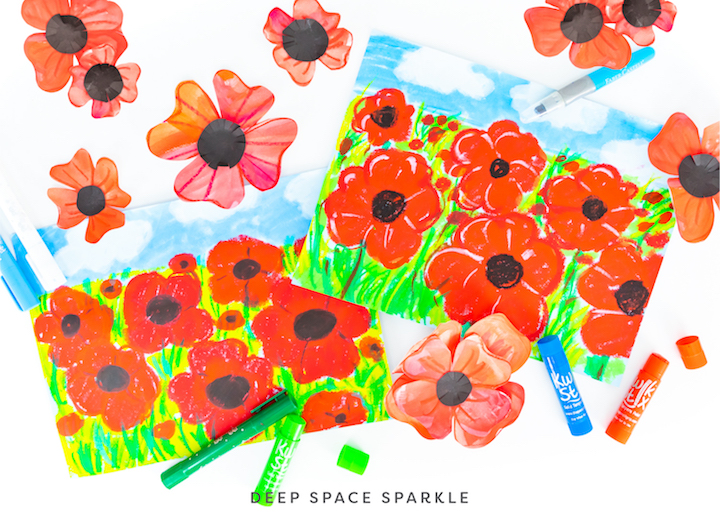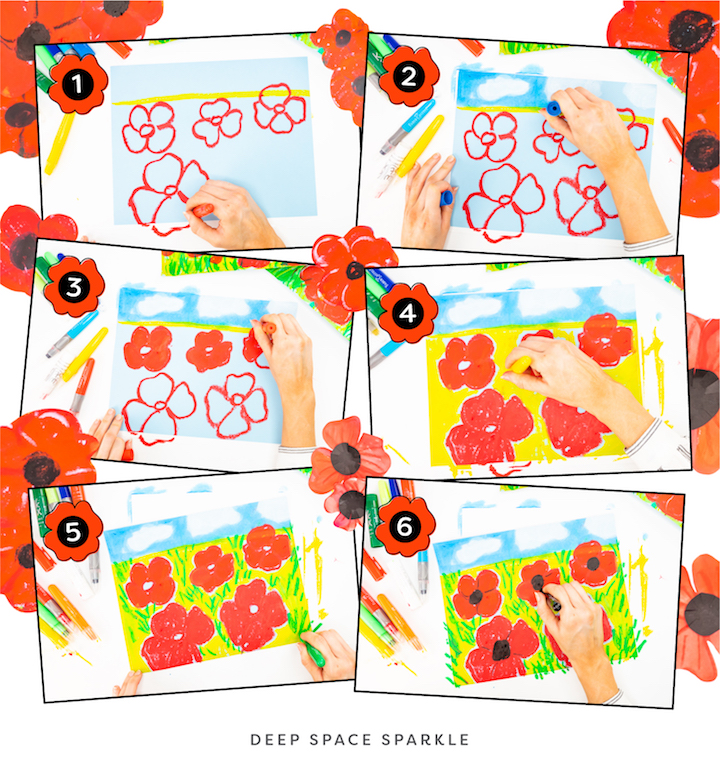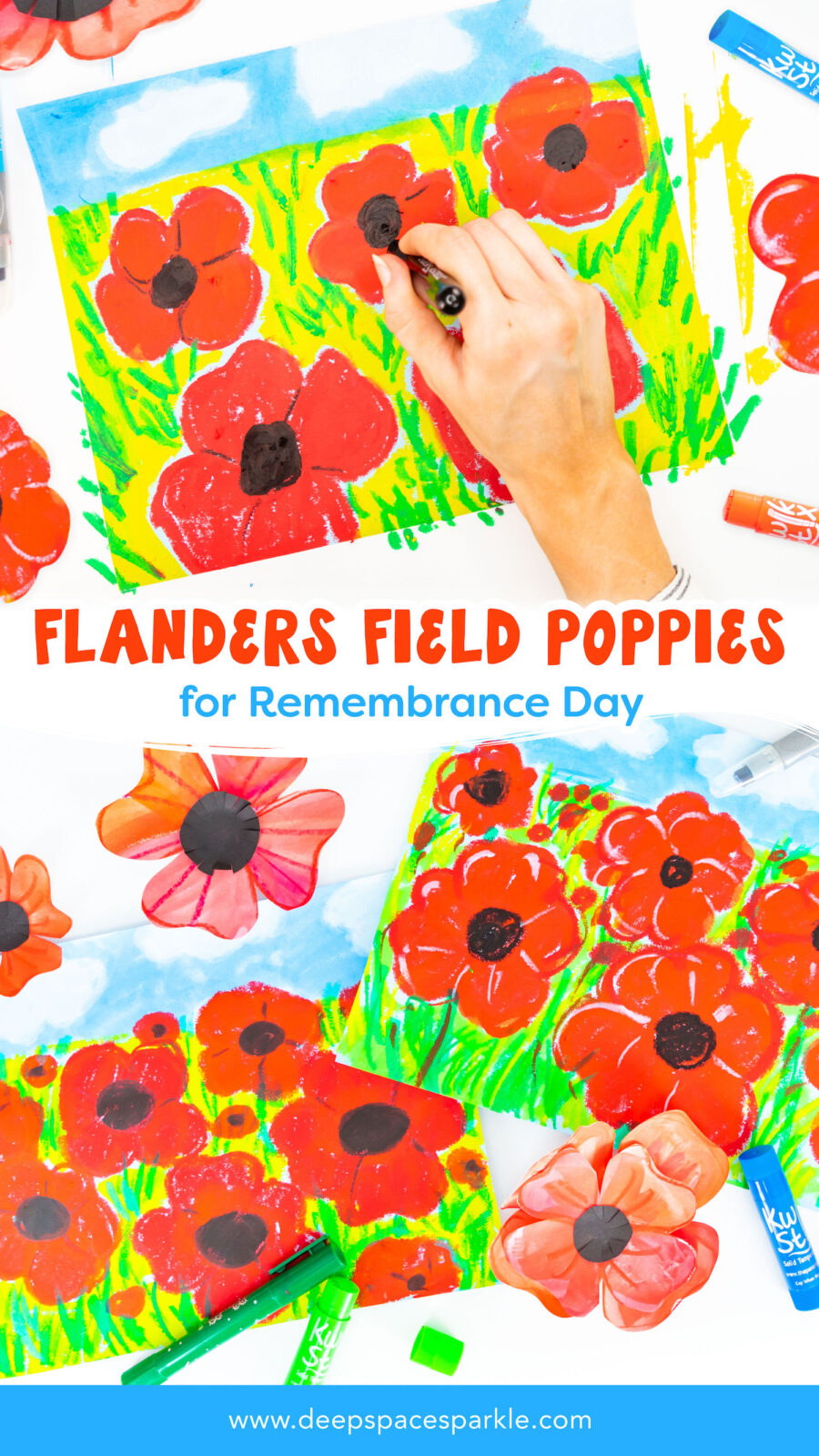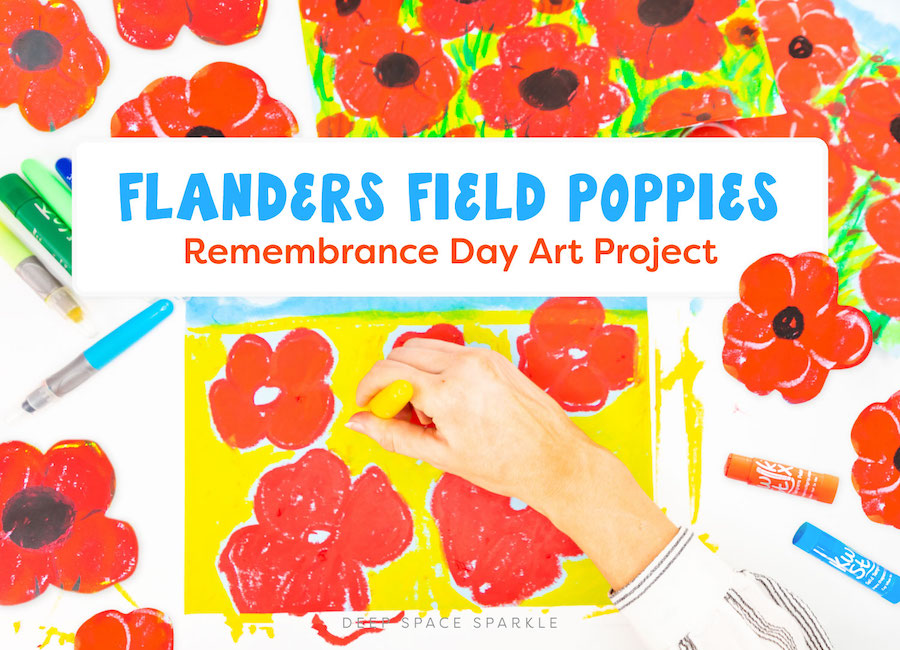Growing up in Canada, late Fall meant more than the anticipation of Halloween. It was the appearance of bright red poppies on the lapels of every citizen in our small town. The plastic and felt red poppy, offered to citizens for a small donation, became the symbol of honoring our fallen soldiers from the first world war.
Poppies were worn on our lapels, on the left side above our hearts. In school, we learned to recite from the heart, the poem made famous by Canadian Lieutenant-Colonel John MacRae, In Flanders Field.
The poppy doesn’t hold as much significance on the west coast of the United States as it does in Canada, and yet, I still receive many requests from Canadian and Australian teachers asking for a poppy lesson.
I have two projects that I hope evoke a sense of remembrance for those who fought for our freedom. These Flanders Field Poppies, and our Cut Out Poppies art project. I hope they instill a sense of tradition and meaning to wars from our not so distant past.
You can find more information on the history of the poppy right here, and a copy of the poem that inspired the relationship between the poppy and the commonwealth holiday of Remembrance Day.
Flanders Field Poppies
The best part about this project is not the bright red pops of colors (but of course, that color jolt is absolutely divine), but rather it’s finally finding a perfect use for my bin of tempera paint sticks.

The paint stick brands I’ve tried have been frustratingly random – some colors are opaque and glorious, while others are transparent and slimy. Oh, why oh why can’t all colors be consistent? But let’s put that aside and stand confident that the reds are always glorious.
I wanted to celebrate Flanders Field and quite honestly, there are many awesome lessons out there that you can try, but this one is designed to do in one 30-minute session.
WHAT YOU’LL NEED:
– 12″ x 9″ blue or light colored paper
– Tempera paint sticks (red, white, black, yellow, greens). I like paint sticks the best but Faber-Castell gel sticks are pretty awesome, too
– Oil pastels (if you don’t have paint sticks. Keep in mind the project will take longer with oil pastels)
– Red crayon or oil pastel to draw
THE PROJECT
On a sheet of light colored paper, draw a HORIZON LINE across the top one third of the paper. Next, start drawing a row of poppies along the bottom edge of the horizon line. The poppies should be relatively small.
Just draw an outline, and keep it simple with the smaller ones – just a circle with a dot.
Keep drawing poppies that get progressively bigger as you move down the paper. They don’t have to be in rows, nor do you need to make too many. In fact, it’s better to have little hands make their poppies no smaller than a dime, and no larger than a medium orange. The reason is that tempera paint sticks are thick and best for laying down large areas of color.

To draw a larger poppy, start with a dot, make an x or a + through the dot, and then draw a large circle around the lines, touching the ends.
Then, draw a curved line between each segment. You should have 4 petals.
Draw the outline of fluffy clouds. Fill the sky with any color and use white paint sticks to color the sky.
Color all the poppies with the red paint sticks. Oh my. I really believe this is what paint stick designers were envisioning when creating their red sticks. Even teeny weeny kids will be successful rubbing the intense color onto the happy field.
When large poppies dominate the bottom of the paper, and smaller poppies dominate the area closest to the horizon line, then kids can grab greens, yellows, blues and orange colors to draw in the grassy areas. Don’t offer too much instruction here. It would be fun to observe how children manage the grassy fields and see what they do.
Use a black stick to draw in the large black centers for the poppies.
Display around your classroom or home. Or, pin it to your left lapel.
I can’t wait to see your vibrant poppy display. Please tag me on Instagram @deepspacesparkle so I can share your pictures.

Written by Patty Palmer – CEO and Founder of Deep Space Sparkle














How lovely! Poppy is also the flower of Palestine! It grows in abundance in Palestine, symbolizes the relationship between Palestinians and their land.
Lovely poppies